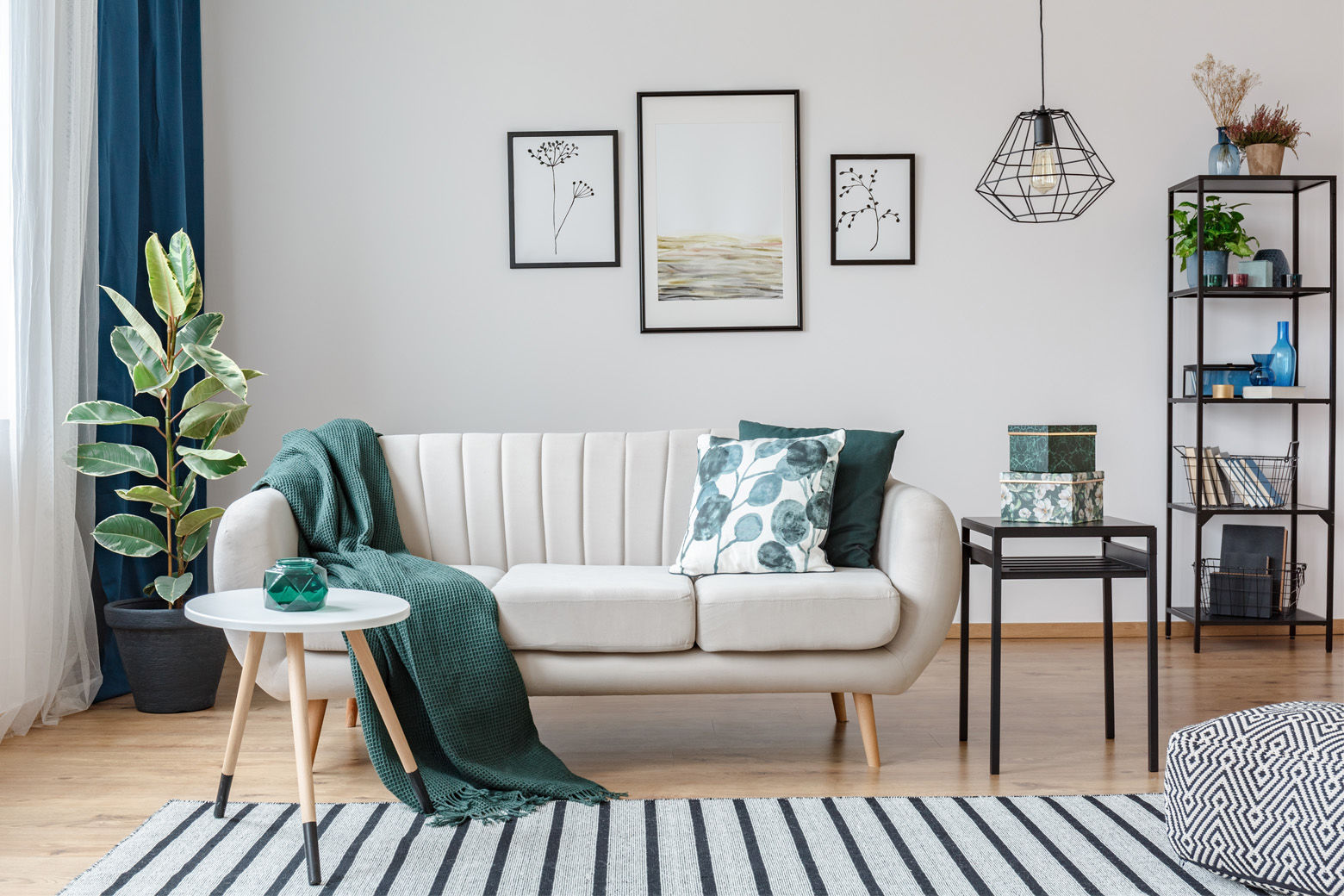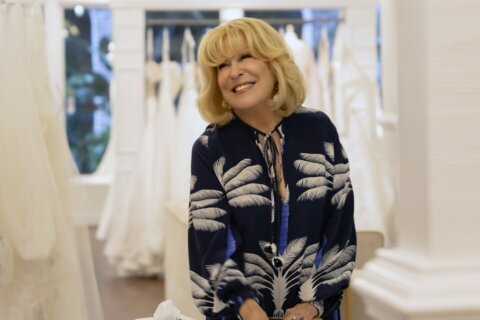
Wanting a home that looks stylish and photo-worthy is a common goal. But how can you keep up with the trendsetting interior spaces of the moment? Contemporary design trends often find inspiration from existing styles, and combine them to make the look we see on TV, Pinterest and in interior design magazines.
In order to grasp the right interior design techniques, you’ll first need to understand what contemporary design is. Then, you’ll be able to take the trends and make them work in your home.
Here are eight ways you can incorporate contemporary design trends:
— Clean lines.
— Combined styles.
— Simple colors.
— Exposed imperfections.
— Comfortable furniture.
— Hard floors.
— Additional decor.
— Function and form in the right places.
[Read: 7 Kitchen Remodel Ideas on a Budget.]
Understanding Contemporary Design
Before getting into the nitty-gritty of how you can make contemporary design work in your home, it’s important to note the difference between contemporary design and other styles, which may sound similar and intersect in certain trends or details, but are in fact distinct.
Contemporary design. Contemporary design reflects the design trends of the moment and is often a combination of other existing design styles to mirror the common preferences of the current time. Contemporary design is often misrepresented as modern, and while it can — and often does — incorporate the modern design style, there are more details at play. Because it follows popular styles of the moment, contemporary design looks current and doesn’t immediately evoke thoughts of a specific time period or style exclusively. Contemporary design of today is characterized by an overall clean look, with simple decoration and subtle variations in color and texture throughout a space.
Modern design. Modern design is defined by a specific time period — namely, the mid-20th century — and is embodied by its focus on function, minimalism, clean lines, geometric patterns and the emergence of plastic as a material for furniture and decor. Contemporary design does pull from midcentury modern design aesthetics, but contemporary design goes beyond to include other design styles as well.
Traditional design. Traditional design, on the other hand, embraces more ornate decor, incorporates rich colors and has a distinct European influence. Traditional design focuses closely on details, with claw foot furniture, overstuffed couches and chairs and architectural elements like crown molding, columns and built-in cabinets and shelves.
Read on for the lowdown on contemporary design trends and ideas you can add to your home.
Clean Lines
While not quite as simplistic as midcentury modern style, contemporary trends are aimed at avoiding an overcomplicated look. You want the eye to naturally flow from one object in the room to the other, rather than getting overwhelmed looking at a space.
Combining Styles
If you shop exclusively at one store to decorate your home, it’ll likely capture a specific style. Ikea, for instance, will give your home a clear Swedish modern feel, while West Elm furniture tends to focus on midcentury modern. Keep your space contemporary by including multiple design aesthetics, rather than sticking to one.
Purposely mix different styles and periods in one room, says Adam Meshberg, founder and principal of architecture and interior design firm Meshberg Group, based in New York City. “Mix it up and maybe put some graffiti art in a painting mixed in with a washed Persian rug,” he says. “It gives it a unique style.”
Simple Colors
Neutrals are the go-to color scheme for contemporary design, with bright colors used as accents. Often walls and main pieces of furniture in a room are kept neutral, allowing for pillows, blankets, wall art or tabletop decor to offer one or two accent colors in the room.
But the choice of grays or beige doesn’t have to be boring. Rising in popularity for paint colors are the shades that have undertones of warmer red or pink, or even opting for a more metallic gray, says Tina Nokes, co-owner of Five Star Painting in Loudoun County, Virginia, part of the Neighborly network of home service companies. “Those warm grays and silvery grays are still the most popular thing we do,” she says.
In some cases, you can even make your walls the accent color — either with a single wall or even the entire room — by focusing neutrals in the furniture and other decor. “A lot of people like the teals, (and) the blue-green that looks like water,” Nokes says.
[Read: 8 Ways to Upgrade Your Front Porch.]
Exposed Imperfections
An exposed brick wall or uncovered air ducts and pipes coming from the ceiling often work well in contemporary design. Ductwork and piping can be left in their natural state, or they can be painted to help them blend in (or even stand out more) with the rest of a room. The exposed look pulls from industrial design, which is becoming a larger part of contemporary design trends in recent years.
“People love the story of the old bones of houses or buildings,” Meshberg says. Even if your home is relatively new, he says you can expose a concrete wall or even bring in reclaimed wood that wasn’t there before to offer up a look that makes the space feel unique.
In June, the online furniture company Joybird examined the top-searched interior design styles by state through Google Trends. The findings, released in a report, note that industrial style was most popular, with 12 states seeing it as the most commonly searched design aesthetic, including three states in the Midwest, much of the Mountain West and additional outliers like Alaska, Louisiana, North Carolina and New Hampshire.
Comfortable Furniture
Contemporary furniture follows the same rules of simplicity, without too much decoration or complication. But the pieces should also focus on comfort and function — a couch and chairs that make it easy for family and friends to sit for hours adheres to contemporary goals.
The most popular furniture choices stick to neutrals for the main chairs, couches and coffee or side tables. Select pieces that show the legs of the couch or chair, rather than having a skirt around it — a style that is now considered dated.
Hard Floors
Because the focus of a contemporary design is on clean lines and a clean space overall, you’re more likely to see hardwood, tile or vinyl floors in a contemporary home. Carpeting doesn’t line up well with contemporary styles, and while rugs are used, they’re often used sparingly and as accent patterns or colors.
In an open floor plan, continuous flooring throughout the space is common to make the area look big and cohesive, but to help break it up and establish more intimate spaces, consider introducing additional materials.
In designing the lobby space of a Brooklyn apartment building, Meshberg inlaid tile in the area of the business center, breaking up the concrete flooring of the entire lobby area. “It juxtaposes a handcrafted look with an industrial look,” Meshberg says.
Additional Decor
Contemporary trends in previous years have centered around a more minimalist look to focus on clean lines, but more tabletop or shelf decor has become the emerging trend. You can also personalize the space with photos, vases, candles and plants that speak to your individual style in a room.
Family heirlooms on display or a collection of vintage items that appeal to your tastes — cameras, books or even dishes — show personality, but also follows popular love of vintage items. In the Joybird report, the second-most popular interior design style by state was vintage, which is the No. 1 style among searches in Connecticut, Kansas, Oklahoma, Pennsylvania, Texas and Vermont.
Vases, planters and tabletop decor should follow contemporary rules for clean lines — go for the simpler design rather than one that introduces an overly complicated pattern or ornate silhouette.
[See: 10 Home Renovations Under $5,000.]
Function and Form in the Right Places
While you may tend to lean toward the most simplistic details of contemporary design to avoid making a decorating faux pas, there are certainly parts of your home where you can be a bit more adventurous with color, pattern and texture.
If you have more than one living space, for example, embrace more traditional European details in a formal living room. “If it’s formal , you can do more drama because it’s not used as much,” Nokes says.
Additionally powder rooms or half bathrooms are a perfect place to showcase a patterned wallpaper — it may be overwhelming in a larger space, but walls covered in palm leaf or flamingo designs can be a fun surprise for guests who pop in to wash their hands.
More from U.S. News
7 Reasons Why Renovating Is Better Than Buying a New Home
The Best Time of Year for Every Home Improvement Project
The Guide to Contemporary Design Trends for Your Home originally appeared on usnews.com






